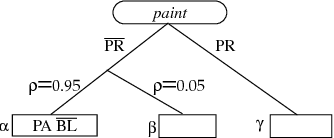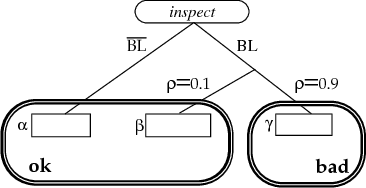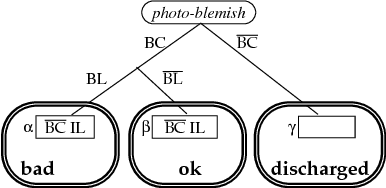Steve Hanks
Proceedings of the Eleventh Conference on Uncertainty in Artificial Intelligence (1995)
Aug 28, 2014Abstract:This is the Proceedings of the Eleventh Conference on Uncertainty in Artificial Intelligence, which was held in Montreal, QU, August 18-20, 1995
Temporal Reasoning About Uncertain Worlds
Mar 27, 2013Abstract:We present a program that manages a database of temporally scoped beliefs. The basic functionality of the system includes maintaining a network of constraints among time points, supporting a variety of fetches, mediating the application of causal rules, monitoring intervals of time for the addition of new facts, and managing data dependencies that keep the database consistent. At this level the system operates independent of any measure of belief or belief calculus. We provide an example of how an application program mi9ght use this functionality to implement a belief calculus.
A Probabilistic Model of Action for Least-Commitment Planning with Information Gather
Feb 27, 2013



Abstract:AI planning algorithms have addressed the problem of generating sequences of operators that achieve some input goal, usually assuming that the planning agent has perfect control over and information about the world. Relaxing these assumptions requires an extension to the action representation that allows reasoning both about the changes an action makes and the information it provides. This paper presents an action representation that extends the deterministic STRIPS model, allowing actions to have both causal and informational effects, both of which can be context dependent and noisy. We also demonstrate how a standard least-commitment planning algorithm can be extended to include informational actions and contingent execution.
Localized Partial Evaluation of Belief Networks
Feb 27, 2013



Abstract:Most algorithms for propagating evidence through belief networks have been exact and exhaustive: they produce an exact (point-valued) marginal probability for every node in the network. Often, however, an application will not need information about every n ode in the network nor will it need exact probabilities. We present the localized partial evaluation (LPE) propagation algorithm, which computes interval bounds on the marginal probability of a specified query node by examining a subset of the nodes in the entire network. Conceptually, LPE ignores parts of the network that are "too far away" from the queried node to have much impact on its value. LPE has the "anytime" property of being able to produce better solutions (tighter intervals) given more time to consider more of the network.
Probabilistic Temporal Reasoning with Endogenous Change
Feb 20, 2013



Abstract:This paper presents a probabilistic model for reasoning about the state of a system as it changes over time, both due to exogenous and endogenous influences. Our target domain is a class of medical prediction problems that are neither so urgent as to preclude careful diagnosis nor progress so slowly as to allow arbitrary testing and treatment options. In these domains there is typically enough time to gather information about the patient's state and consider alternative diagnoses and treatments, but the temporal interaction between the timing of tests, treatments, and the course of the disease must also be considered. Our approach is to elicit a qualitative structural model of the patient from a human expert---the model identifies important attributes, the way in which exogenous changes affect attribute values, and the way in which the patient's condition changes endogenously. We then elicit probabilistic information to capture the expert's uncertainty about the effects of tests and treatments and the nature and timing of endogenous state changes. This paper describes the model in the context of a problem in treating vehicle accident trauma, and suggests a method for solving the model based on the technique of sequential imputation. A complementary goal of this work is to understand and synthesize a disparate collection of research efforts all using the name ?probabilistic temporal reasoning.? This paper analyzes related work and points out essential differences between our proposed model and other approaches in the literature.
 Add to Chrome
Add to Chrome Add to Firefox
Add to Firefox Add to Edge
Add to Edge